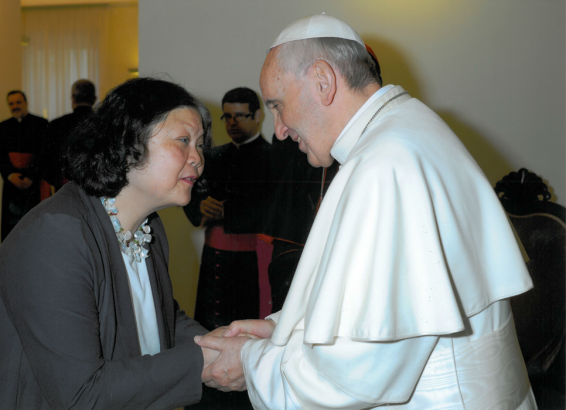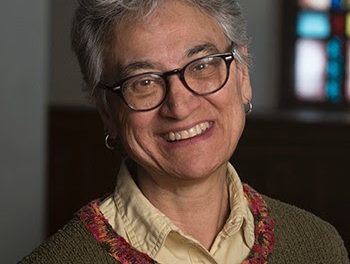The announcement this morning that the Catechism’s teaching on the death penalty is changing (again – this section was also revised between the first and section edition of the Catechism, after St. John Paul II’s 1995 encyclical Evangelium Vitae) is a welcome completion of the development of Catholic moral theology. It will be greeted with some celebration and some gnashing of teeth by political partisans, but the development should be understood as a key moment strengthening the consistency of the teaching authority of the Church. There are three key lessons to keep in mind in evaluating this:
- Church teaching on morality develops. This should be an obvious claim, but it is still poorly understood by too many. On the one hand, some maintain that Church teaching is fixed, because if it isn’t, then the Church would have taught “error.” This understanding is very hard to take seriously if one has any historical understanding of the tradition. The tradition has developed robust tools to understand and differentiate authentic from inauthentic development. On the other hand, the impression given by some reports that “Francis is changing Church teaching” suggests a kind of “papal positivism,” in which a particular pontiff simply decides to impose his own personal views – much like a president who switches trade policy. This is also a mistake. Indeed, if anyone can be said to have “changed” teaching on this matter, it is John Paul II. He made the decisive move in Evangelium Vitae when he eliminated the traditional idea that certain crimes might “deserve” the death penalty, as a matter of simple justice. Francis is simply completing that trajectory.
- The Church must give plausible and clear reasons for development. As outlined by CDF chief Luis Ladaria, the revised paragraphs of the Catechism do exactly this. These reasons – not the conclusion – are what must be subjected to scrutiny in determining the authenticity of the development. As stated in the revised text, there are three reasons given: the deeper appreciation of the dignity of human persons, a “new understanding” of the meaning of “penal sanctions imposed by the state,” and the development of “effective systems of detention.” The first and third of these reasons are already enshrined in John Paul’s development of the teaching. The first is of the greatest significance. As with the case of slavery, the development of Church teaching to understand more stringently the full dignity of all persons is a very important reason to avoid actions that even appear to undermine that dignity. However, we might note the interesting addition of the second reason. One of the key reasons given by John Courtney Murray in developing the Church’s teaching on religious freedom is a changed understanding of the role of the state. More specifically, Catholic teaching has more and more accepted a properly limited understanding of the scope of state power. Thus, Vatican II’s teaching upholding religious freedom was not simply a matter of the dignity of persons, but also a sense that the state’s proper competence for caring for the common good is more limited than had been previously thought. This development is in line with Murray’s insight, and helpfully can be seen in the American Bill of Rights’ prohibition on punishment that is “cruel and unusual.” The state does protect the common good, but this revised teaching further limits the means by which they can do so.
- The development strengthens the Church’s teaching that some actions are always wrong, regardless of a person’s intention or the circumstances. The Church often takes heat from many – who may well applaud the abolition of the death penalty – when it states that some acts are “intrinsically evil.” While moral theologians may debate the usefulness of that particular language, the underlying point of the teaching about “intrinsically evil acts” is that some actions are violations of the good that tend to undermine the entire structure of Catholic morality. Most of the moral life does not involve acts that fall under the label of “always wrong.” And some acts the Church deems always wrong – such as lying – may not be that grave. But, as John Finnis nicely points out, the Church’s moral absolutes are “few but strategic.” They exist because they send a crucial message about the truth of the good. Defenders of Humanae Vitae rightly point out that the Catholic rejection of all contraceptive acts is really a matter of defending a crucial truth that human sexuality should not and cannot be severed from procreation. And in this case, the rejection of the death penalty is a “strategic” absolute that especially highlights Francis’s teaching about the extraordinary role of mercy in the Christian life. Francis has said that we should never, ever tire of seeking God’s forgiveness. By restricting the possibility of taking vengeance on another by eliminating their life, we testify to the fundamental dignity and possibility of mercy for even the most hardened criminal. God’s love is always there, always waiting for us to return.
While this is clearly the development of a natural law teaching, the heart of Christian rejection of the death penalty should also be seen in the light of Christ. The central symbol of our faith is a God-man crucified by the state. We look at the death penalty in action every time we enter a church. And we do not worship someone who is enacting it, but someone who is suffering it… for our sake. Christians ought always to be the crucified, and never the crucifier. Today, we are able to say that clearly and completely.





